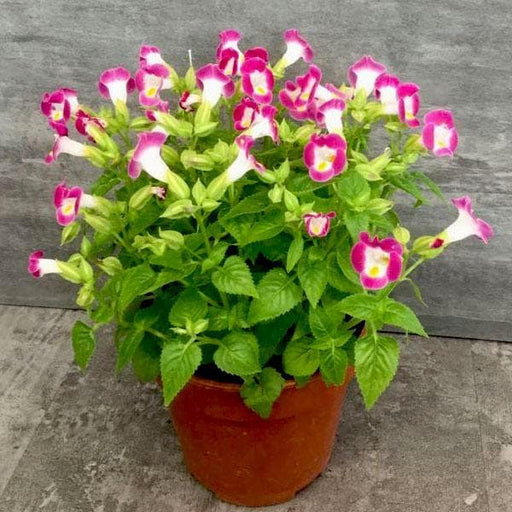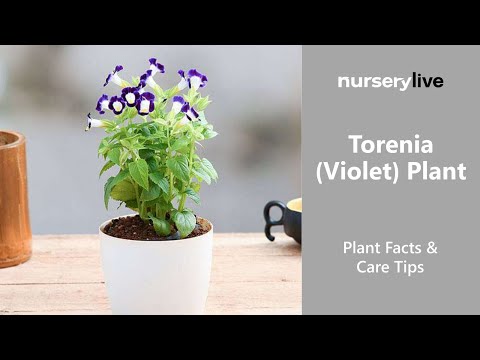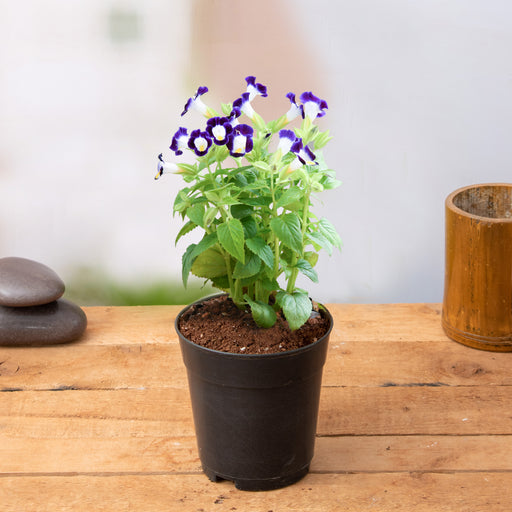Torenia plants care
If you're looking for a plant that is easy to care for and will add some vibrant color to your garden, then Torenia plants are a great choice. These plants require minimal maintenance, making them ideal for busy gardeners. In this article, we will cover everything you need to know about caring for Torenia plants.
Torenia plants indoors
Torenia plants are a fantastic addition to any indoor space. These charming little plants have an exotic appearance that is sure to make them stand out in your home. In this article, we will discuss how to care for Torenia plants indoors, so you can enjoy their beauty all year round.
Torenia plants for sale
If you're looking to buy Torenia plants, then you're in luck! These plants are widely available at most nurseries and garden centers. In this article, we will give you some tips on where to find Torenia plants for sale, and what to look for when purchasing them.
Torenia plants annual or perennial
Are Torenia plants annual or perennial? This is a common question among gardeners. In this article, we will explain the difference between annual and perennial plants and whether Torenia plants fall into one of these categories.
Torenia plants shade
If you're looking for a plant that thrives in shady areas, then Torenia plants are a great choice. These plants are perfect for adding some color to those shady corners of your garden. In this article, we will discuss how to grow Torenia plants in the shade.
Torenia plants sun
While Torenia plants do well in the shade, they also need some sunlight to thrive. In this article, we will discuss how much sun Torenia plants need and how to care for them when they are exposed to sunlight.
Torenia plants watering
Watering Torenia plants can be tricky, as they require a delicate balance of moisture. In this article, we will discuss how to water Torenia plants properly, so they stay healthy and vibrant.
Torenia plants fertilizer
Fertilizing Torenia plants is essential if you want them to thrive. In this article, we will discuss the best fertilizers for Torenia plants and when and how to fertilize them.
Torenia plants propagation
Propagating Torenia plants is an easy and fun way to expand your garden. In this article, we will discuss how to propagate Torenia plants, so you can create new plants from your existing ones.
Torenia plants pruning
Pruning Torenia plants is essential for keeping them healthy and vibrant. In this article, we will discuss when and how to prune Torenia plants, so they stay looking their best.
Torenia plants pests
Like all plants, Torenia plants are susceptible to pests and diseases. In this article, we will discuss the most common pests and diseases that affect Torenia plants and how to prevent and treat them.
Torenia plants colors
Torenia plants come in a wide range of colors, from deep purples to bright pinks and blues. In this article, we will discuss the different colors of Torenia plants and how to choose the right one for your garden.
Torenia plants hanging baskets
Torenia plants are perfect for hanging baskets, as they have a trailing habit that looks beautiful when cascading over the sides of the basket. In this article, we will discuss how to grow Torenia plants in hanging baskets.
Tore nia plants in pots
Torenia plants also do well in pots and containers, making them a great option for small gardens or balcony spaces. In this article, we will discuss how to grow Torenia plants in pots, so you can enjoy their beauty even if you don't have a garden.
Torenia plants companion planting
Companion planting involves planting different plants together that can benefit each other in some way. In this article, we will discuss the best companion plants for Torenia plants and how to plant them together.
Torenia plants landscape
Torenia plants can add a pop of color to any landscape design. In this article, we will discuss how to incorporate Torenia plants into your landscape design and create a stunning garden.
Torenia plants medicinal properties
Torenia plants have some medicinal properties and have been used in traditional medicine for centuries. In this article, we will discuss the medicinal properties of Torenia plants and how to use them.
Torenia plants seeds
If you're interested in growing Torenia plants from seeds, then this article is for you. We will discuss how to collect and store Torenia plant seeds and how to grow them successfully.
Torenia plants in the wild
Torenia plants are native to Asia and Africa and can be found growing wild in these regions. In this article, we will discuss the natural habitat of Torenia plants and how they grow in the wild.
Torenia plants history and folklore
Torenia plants have a rich history and are steeped in folklore and legend. In this article, we will explore the history and folklore of Torenia plants and how they have been used throughout the ages.














































